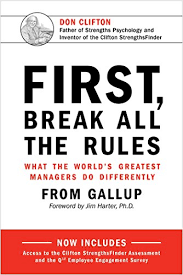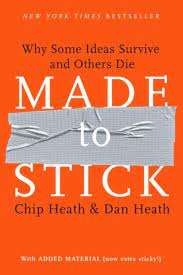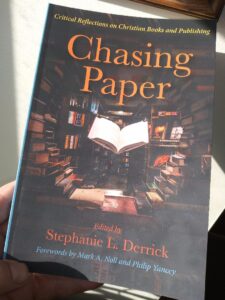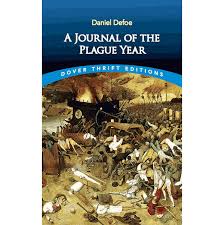Maybe you’ve noticed that a lot of Christmas music is in a minor key. Even many of our favorites.
- What Child Is This?
- O Come, O Come Immanuel
- I Wonder as I Wander
- Mary Did You Know
Every key has its own distinct color and mood. But since Christmas is a joyful time of year, we would think it calls for a solid, all-is-right-with-the-world major key, which it often does. Then why do so many carols make use of the sometimes mournful or uncertain tones of a minor key? Even something as cheery as “Carol of the Bells” is minor!
We can understand it for “O Come, O Come Immanuel” which focuses on the centuries that the people of Israel waited for a Messiah to come and rescue them from the oppression of other nations. A minor key can also convey a sense of mystery, which the story of God becoming human certainly contains.
 But why does “We Three Kings” mix the minor-like Aeolian key with a chorus that is major? Is it to give the carol a Middle Eastern flavor in light of the magi coming from the east? Perhaps.
But why does “We Three Kings” mix the minor-like Aeolian key with a chorus that is major? Is it to give the carol a Middle Eastern flavor in light of the magi coming from the east? Perhaps.
The text of this carol by John Henry Hopkins Jr. may also give us a clue. The five tightly constructed standard five verses include an introductory and closing verse. The three verses in the middle are each devoted to one of the three gifts, each in the voice of a different wise man.
“Gold I bring to crown him again,” declares this first. This verse is appropriately upbeat, noting how gold is associated with kingship and, in this case, a king whose reign will last forever.
The second gift, frankincense, is burned in worship, giving a pungent odor that reminds us both of God’s presence and of our prayers rising to God. As the second wise man says:
Incense owns a Deity nigh;
Prayer and praising, voices raising,
Worshiping God on high.
It’s when we get to myrrh that the minor key truly comes in to play. This spice was commonly used when burying the dead, including Jesus’ burial (John 19:39). Thus:
. . . its bitter perfume
breathes a life of gathering gloom;
sorrowing, sighing, bleeding, dying,
sealed in the stone-cold tomb.
Here we find the reason a minor key is sometimes employed. Christmas carols often point out that the Incarnation is a necessary prelude to the cross. “I Wonder As I Wander,” for example, explicitly opens with the question of why the Savior was born only to die.
The last verse of “We Three Kings” doesn’t stop at the cross, however. It completes the story by looking forward to the resurrection even as it summarizes the previous three:
Glorious now behold him arise;
King [gold] and God [frankincense] and sacrifice [myrrh].
We rightly celebrate the joy of Christmas and the promise brought by the Prince of Peace. Yet it is a story that is deeply human as well as deeply divine, mixing both sorrow and joy. The mixture makes the joy much more than a superficial happiness, but something that is deep and lasting.

 Once upon a time, publishers could successfully sell books of not-so-famous authors through the thousands of bookstores spread around the country. But with the rise of e-sales and the resulting demise of two-thirds of all brick-and-mortar book shops, publishers have had to rely more and more on authors to make a book known.
Once upon a time, publishers could successfully sell books of not-so-famous authors through the thousands of bookstores spread around the country. But with the rise of e-sales and the resulting demise of two-thirds of all brick-and-mortar book shops, publishers have had to rely more and more on authors to make a book known.




 Whole genres even borrow from prior genres. Don’t many sci fi books and movies owe a great debt of gratitude to the old Western? What is different is combining two genres into one.
Whole genres even borrow from prior genres. Don’t many sci fi books and movies owe a great debt of gratitude to the old Western? What is different is combining two genres into one. I knew that in the book Dante is taken on a tour of hell with the ancient Roman poet Virgil as his guide. The best-known line, “Abandon all hope, ye who enter here,” greeted me as it greeted Dante on entering the underworld. There he found descending circles of the damned for such sins as lust, greed, violence, fraud, and betrayal.
I knew that in the book Dante is taken on a tour of hell with the ancient Roman poet Virgil as his guide. The best-known line, “Abandon all hope, ye who enter here,” greeted me as it greeted Dante on entering the underworld. There he found descending circles of the damned for such sins as lust, greed, violence, fraud, and betrayal. It would be like integrating the Star Wars universe or the world of Harry Potter into a biblical cosmology, where Darth Vader and Dumbledore both find themselves under the sway of a powerful Creator God who nonetheless uses sacrifice to resolve all storylines, reconcile all things, renew hope, and make everything right.
It would be like integrating the Star Wars universe or the world of Harry Potter into a biblical cosmology, where Darth Vader and Dumbledore both find themselves under the sway of a powerful Creator God who nonetheless uses sacrifice to resolve all storylines, reconcile all things, renew hope, and make everything right. After waiting a moment and hearing nothing, he said, “Ok, then,” and with a wry smile that impishly suggested we had had our chance and wasted it, he began.
After waiting a moment and hearing nothing, he said, “Ok, then,” and with a wry smile that impishly suggested we had had our chance and wasted it, he began. Over a hundred and twenty years ago, Edith Wharton, the first woman to win the Pulitzer Prize, also suffered from this common malady. In 1899 she wrote to her publisher,
Over a hundred and twenty years ago, Edith Wharton, the first woman to win the Pulitzer Prize, also suffered from this common malady. In 1899 she wrote to her publisher,  “You can cheer on the other girls. You can listen to what Coach says and do it immediately. You can decide not to get down on yourself if you make a mistake but instead try to do better next time. That’s attitude.
“You can cheer on the other girls. You can listen to what Coach says and do it immediately. You can decide not to get down on yourself if you make a mistake but instead try to do better next time. That’s attitude.